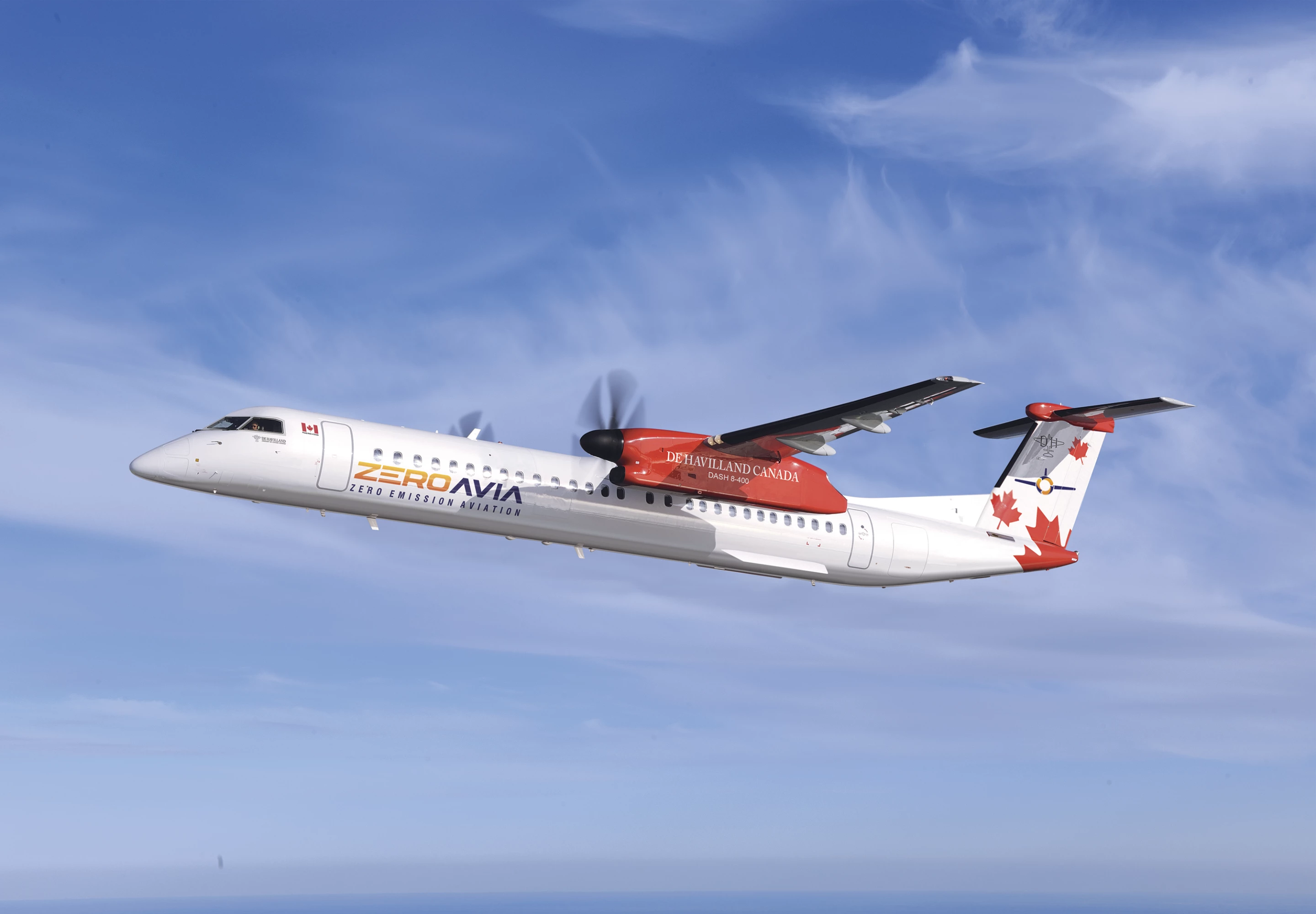De Havilland Canada has partnered with ZeroAvia to develop a zero-emissions hydrogen fuel cell powertrain for its Dash 8-400 airliner, which can either be retrofit to existing planes or supplied as a factory option on new aircraft orders.
The Dash-8 has already been a target for hydrogen conversion, notably by Universal Hydrogen, which has announced plans to complete hydrogen conversions on as many as fifteen 40-seat Dash-8 300 aircraft for Spain's Air Nostrum, Ravn Alaska and IcelandAir Group. ZeroAvia, for its part, has been working on a retrofit for the larger Dash 8-400 to create a 76-seat hydrogen-powered regional airliner for Alaska Airlines.
This latest partnership, though, goes right to the source, signaling De Havilland's intention to offer a clean hydrogen option right off the rack. In a memorandum of understanding (MoU) signed last week, the two companies agreed to develop 2 megawatt-plus ZA2000 hydrogen powertrains for both line-fit and OEM-approved retrofit, with De Havilland getting purchase options on 50 ZeroAvia hydrogen-electric engines, subject to "a definitive agreement."
ZeroAvia will develop a flight demonstrator, and the two companies will work together to get the system certified with the relevant aviation authorities. Hydrogen powertrains tend to be bulky, and will likely displace a few seats from the cabin. The Dash-8 400 can squeeze in up to 90 seats in stock trim, but it's unclear at this stage how many seats the hydrogen version will have space for, or indeed what range the partnership is shooting for.
The Alaska Airlines plane is aiming for 76 seats and a range over 575 miles (976 km), but ZeroAvia says its ZA2000 powertrain should be capable of flying 40-80 passengers with range figures as high as 800 miles (1,300 km) by 2026, and it's planning to extend into aircraft up to 90 passengers by 2027. So it'll be interesting to see what this OEM partnership puts out there as a first product.
The partnership aims to identify a suitable existing route for the demonstration aircraft, and get it into service within five years. The rubber is certainly starting to hit the road for ZeroAvia, which is preparing to fly its 19-seat regional aircraft "in the coming weeks" – albeit in a hybrid configuration using one conventional engine and one hydrogen-electric. In 2022, this machine will go fully hydrogen-powered, and ZeroAvia hopes to have it certified sometime in 2024.
“De Havilland Canada has a strong belief in hydrogen-electric technology as a viable solution for de-carbonizing aviation," said Dave Riggs, Chief Transformation Officer at De Havilland Canada in a press release. "We are extremely pleased to be collaborating with ZeroAvia in developing climate-friendly propulsion as an option for our customers around the globe.”
"De Havilland Canada have made significant strides on emission reductions and shown a big commitment to greener aviation," said ZeroAvia Founder and CEO Val Miftahkov, "and the next step is to go to true zero-emission using hydrogen-electric engines. Partnering with De Havilland Canada puts ZeroAvia on a defined pathway to line-fitting into new airframes and signals OEM appetite to make the switch to certified, zero-emission propulsion as soon as possible."
Source: ZeroAvia





